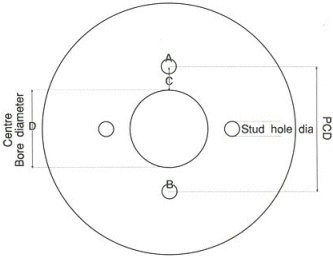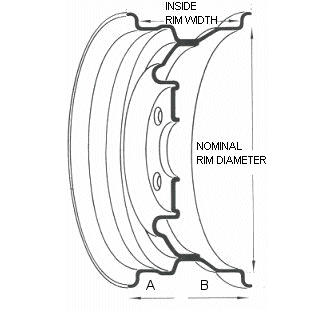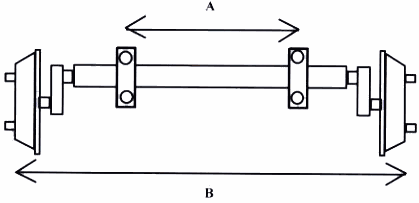Frequently Asked Questions
What Is The Problem?
Up to October 1997 and the introduction of new wiring standards for caravans and leisure vehicles, all the 12S system (with the exception of pin 1, yellow, reverse) relied on one heavy wire (pin 3, white) for the earth return. Pins 5 (brown) and 7 (black) were unused. Since EN1648-1, the central pin 7 (black) has been allocated as the refrigerator earth return and pin 2 (blue) is now redundant (previously battery charging circuit). These changes roughly coincide with the introduction of new larger fridge/freezers which, naturally, draw more current.
Pin 7 is an extended male segmented pin in the plug and acts as the ‘lead’ to guide the plug into the socket. As such, it is the one pin most likely to suffer damage in use. This, coupled with the higher current draw and the smaller cross sectional area of the wire is causing voltage drop, higher resistance, heat build up and consequently, melting plugs and/or sockets.
And The Answer?
You could change your double socket system on car and caravan to one of three continental 13 pin plug systems (either Jaeger or Feder/West Multicon). This, however, would entail changing other caravans and trailers that you may want to tow (though the Feder/West Multicon sockets will accept a standard 12N plug in the centre), and would prove expensive.
Alternatively, you could do a minor modification to the caravan 12S plug wiring. As pin 5 is unused, it is possible to link pin 7 to pin 5 and (provided the brown wire is earthed in the towing vehicle) share the load between both. Additionally, as pin 2 is now unused (though still probably connected to the split charge relay) the same can be done with the feed by linking pin 6 to pin 2.
The advantages are obvious. The combination of 2 cores gives a greater CSA than called for in the legislation and the load (feed and return) is shared by 4 pins instead of two. There will be less voltage drop, less resistance and less heat build up. It is a relatively simple DIY alteration and is inexpensive.
I would recommend using 28/0.30 (17.5 amp) cable for the linking wires.
If you are thinking of fitting a towbar to your motorhome, just check a couple of things before you start.
Firstly, do you actually have the spare capacity to do it? If your vehicle handbook does not list a towing limit, have a look at the VIN plate. This should give the Gross Train Weight (the largest figure) followed by the Maximum Gross Weight. Two other figures you would expect to see are Axle Weights. Deduct the MGW from the GTW and the difference would normally be your maximum towing limit.
Secondly, check the wheelbase of the vehicle (centre of front axle to centre of rear axle) and then measure the overhang (the distance from the centre of the rear axle to the extreme back). The overhang can go up to 60% of the wheelbase and the towbar needs to fit within this limit.
If your vehicle has an Al-Ko chassis, do not allow the fitter to drill extra holes for the towbar mounting. Your chassis warranty would be invalidated.
To tow without brakes on the trailer, the Maximum Gross Weight of that trailer must not exceed 750 kgs or half the Kerbside Weight of the towing vehicle, whichever is the least. Unbraked trailers must be clearly marked with the year of manufacture and their Maximum Gross Weight. If built after 1/1.97, they must have a secondary coupling fitted.
Braked trailers manufactured after 1968 must have brakes on all wheels. If built after October 1982, an hydraulically damped over-run coupling is required and, if built after April 1989, the trailer must have an auto-reverse brake mechanism which meets the efficiency laid down in EC directive 71/320. Additionally, braked trailers need to have a breakaway cable fitted which is capable of operating the handbrake mechanism if the trailer becomes detached from the towing vehicle, it is an offence not to use it and, it must be ‘securely attached’ to the towing vehicle. It is unlikely that merely looping round the towball would be considered a secure attachment!
What is a trailer?
A road vehicle, usually (but not necessarily) two wheeled, towed by a motor vehicle.Given the above dictionary definition, it is fairly clear that anything attached to the towball and having wheels in contact with the ground is a trailer. This includes cars on ‘A’ frames and dollies. Bearing in mind that the unbraked towing limit of 750 kgs refers to Maximum Gross Weight (i.e. the figure on the towed cars VIN plate) and not to actual weight, it severely restricts the options. The only cars I know of with a MGW of less than 750 kgs is the Aixam range. These are around 450 to 550 kgs.
There are strict regulations on braked trailers and, whilst a braked ‘A’ frame attached to a towed car constitutes a braked trailer, it is not legal for transportation as it cannot comply with EC71/320. With car dollies, the situation is somewhat different. Under regulation 83 of the Road Vehicles (construction & Use) Regulations 1986 (SI.1986/1078) Amending Regulations, a car dolly, with a car in place, will be considered as two trailers. This is legal for recovery but, under the Road Traffic Regulations Act 1984 (Schedule 6) the combination is limited to 40 mph on motorways and dual carriageways and 20 mph elsewhere.
Note that there is a very specific difference between recovery and transportation. Recovery is the removal of a broken down vehicle to a place of safety. It does not include removing a rotor arm (for instance) and travelling the length and breadth of the country. The police are well aware of the difference due to the regulations covering Tachographs and Operators Licences. Recovery vehicles are exempt.
It is well known that some countries in the EEC tend to overlook the regulations (the UK included) but some countries don’t. The situation regarding enforcement could change at any time and, as a result, the only safe way to transport another vehicle behind a motorhome is on a car transporter trailer. Play safe! Don’t take the risk!
The regulations which cover this aspect of towing are:-
91/438/EEC covers driving licences.
71/320/EEC covers auto reverse braking systems and couplings.
S.I. 1971 No 450 Part III covers the obstruction of number plates.
94/20/EEC covers type approval of towing equipment and ‘S’
and ‘D’ values.
95/48/EEC covers Masses and Dimensions of M1 class vehicles.
E.T.R.T.O. 1991 section 13 covers wheels and tyres.
BSAU 113c covers 50mm ball and coupling dimensions.
BSAU 24a (1989) covers eye couplings and pin/jaw arrangements.
98/12/EEC covers brake linings and will be implemented in the UK from 1/4/01.And not strictly towing but applicable to motorhomes is EN1648-1 covers extra low voltage installations in Leisure Vehicles and Caravans.
The 'pcd' (pitch circle diameter) is the measurement you will always be asked for when enquiring about a wheel rim.
Number of Rim Studs
 3 Stud Rim
3 Stud Rim
Measure C, this is the distance from the centre of a stud to the edge of the hub centre. Measure D, this is the hub centre diameter. pcd = (C x 2) + D
4 Stud Rim
Measure across the centre hub
from the centre of one stud to
another, this is the 'pcd'
5 Stud Rim
Measure C, this is the distance from the centre of a stud to the edge of the hub centre. Measure D, this is the hub centre diameter. pcd = (C x 2) +D
 The other measurements needed will be:-
The other measurements needed will be:-
1) The wheel rim diameter, this can be obtained from the information on the tyre
eg. 520x 10, 175x13, 650x16, etc...
2) The wheel section, this is normally stamped in the rim. This a number followed by a letter eg. 4½ J, 5 J, 5½ J etc....
3) The 'offset' is then another factor to consider, if A is equal to B, it is a centre web rim, if A is greater than B, the rim has an offset.
Please complete all the details as accurately as possible for a quote to be provided, certain criteria may no longer be available and you may need to make modifications when fitting the new axle.
| Specification | Details |
|---|---|
| Axle Type No ? (see axle plate) | |
| Axle Serial No ? (See axle plate) | |
| Axle Make? (see axle plate) | |
| Axle capacity | |
| Mounting bracket hole centres - A | |
| Mounting bracket bolt hole sizes | |
| Hub face centres - B | |
| Is the axle braked ? | Braked / Unbraked |
| Type of brakes ? | Standard / Auto reverse brakes |
| Operation of brakes ? | Rod operated / bowden cable brakes |
| Wheel rim / Hub PCD | |
| No of wheel studs | |
| Wheel stud size | |
| Wheel stud type | Knock in stud & nut / screw in bolt |

Disclaimer
The information in this guide is as accurate as the writer is able to make it, however, no responsibility can be accepted for any inaccuracies which may be in the text. It is the responsibility of any person wishing to depend on the facts to check for themselves with original documentation or any updating regulations, instruments or changes in the law. Interpretation of the law is a matter for the courts.
